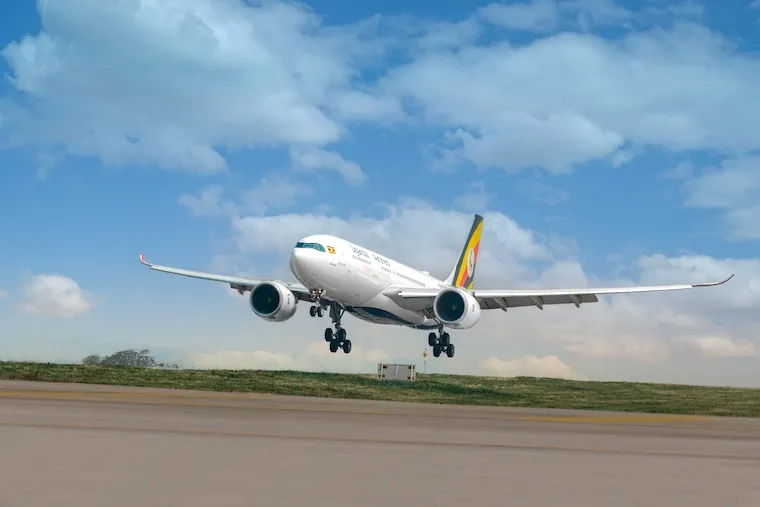Uganda Airlines, the national carrier, is set to establish an aircraft hangar for the maintenance of its fleet, The Observer has learned.
Currently, Uganda Airlines operates a fleet consisting of two Airbus A330-800Ns and four Bombardier CRJ-900LRs. The Airbus aircraft are used for long-haul international routes, while the Bombardier aircraft serve regional and shorter routes.
Recently, Uganda Airlines introduced an Airbus A320-200 under a short-term wet lease agreement with Lithuanian-based DAT. However, maintenance costs currently account for 20% of the company’s budget.
Establishing a hangar will reduce the government’s expenditure on sending aircraft abroad for maintenance. According to sources, the airline will need at least $50 million (UGX 183 billion) to establish a fully equipped and up-to-standard aircraft hangar.
According to Adedayo Olawuyi, chief commercial officer of Uganda National Airlines Company Limited, the aircraft hangar is part of the airline’s 10-year strategic plan, set to launch later this year.
“We have been engaging with the Ugandan Civil Aviation Authority. We are looking to acquire land from them to build our own hangar, enabling us to conduct in-house maintenance,” Olawuyi stated.
Last year, the airline received approval from the Civil Aviation Authority (CAA) to become an Approved Maintenance Organization (AMO) and has since enrolled engineers to conduct maintenance up to line checks at Entebbe Airport. However, major maintenance checks are still conducted at approved AMOs abroad.
“We hope to develop the expertise and capabilities to conduct heavy maintenance checks in Entebbe in the future. This will help us save significant foreign exchange currently spent on outsourcing maintenance services,” Olawuyi said.

Uganda Airlines recently launched a direct flight to London Gatwick, its third international route outside Africa, following Mumbai and Dubai. The airline now flies to 17 destinations, including Abuja, Lusaka, Harare, Nairobi, Mombasa, Dar es Salaam, Bujumbura, Johannesburg, Dubai, Zanzibar, Lagos, Kinshasa, Mumbai, Mogadishu, Juba, and Kilimanjaro.
As part of its expansion strategy, Uganda Airlines also plans to establish its own hotel to cater to connecting passengers.
“There are instances where passengers have long layovers of up to 10 hours in Entebbe. Providing them with hotel accommodation enhances their experience and promotes tourism,” Olawuyi said.
Currently, the airline incurs substantial costs providing hotel accommodation for passengers and crew. Establishing its own hotel will significantly reduce these expenses. Several successful airlines, such as Ethiopian Airlines, own airport hotels, catering services, and maintenance facilities, allowing them to minimize operational costs.
Uganda Airlines aims to adopt a similar model to enhance profitability. According to its strategic plan, the company intends to acquire four mid-range aircraft, including the Airbus A320 and A321neo, as well as two Boeing Dreamliners.
Additionally, Uganda Airlines plans to acquire two cargo freighters: a narrow-body Boeing 737 and a wide-body Boeing 777 freighter. Before the end of the year, the airline plans to introduce new routes to Accra (Ghana), Jeddah and Riyadh (Saudi Arabia), and Cape Town (South Africa).
By the end of the 10-year plan, Uganda Airlines aims to operate between 32 and 35 destinations.
“If we acquire the required aircraft, we plan to launch a route to Guangzhou, China. However, with our current fleet, once we start London operations, we won’t be able to add Guangzhou until we acquire a third wide-body aircraft,” Olawuyi said.
Credit: Geofrey S.



